Battleships are amazing pieces of engineering. Technological masterpieces that were unique to the Navy that developed them. As Navies honed their designs and introduced newer classes, they incorporated several design features that often set them apart from their contemporaries. After the success of our last article that examined several of these features for the Japanese Yamato class, I decided to revisit the series. This time, we will be looking at the superb Richelieu class battleships of the French Navy. Though somewhat underappreciated due to their role in the Second World War, the Richelieu class battleships were by no means inferior to their peers. In fact, the distinctive look of the Richelieu class is only matched by their excellent, well-balanced design. Without further delay, let’s examine four features that made these dreadnoughts stand out among the rest!
A Deep Torpedo Defense System.
Torpedoes could, and did, wreck all sorts of havoc on warships. The way in which they damaged warships was drastically different from shells. As far as torpedo defense systems went, nations experimented with several layouts in the quest for the best protection. While torpedo defense systems had many features that contributed to their effectiveness, one of the most important was the overall depth of the system. A deeper system, one that had more distance from the point of impact to the ship’s internal vitals, generally performed better. Designers struggled to fit the deepest torpedo defense systems in their hulls.
The designers of the Richelieu class succeeded in their quest. The Richelieu class had an impressively deep torpedo defense system. At the system’s maximum depth amidships, the Richelieu class enjoyed a depth of 23’. This was greater than that found on any of her contemporaries. In fact, the only ship that exceeded the Richelieu class was their predecessors in the French Navy, the Dunkerque class.
Torpedo defense system depths:
| Class | Beam | Displacement (Long Tons) | Torpedo Belt Depth |
| Richelieu Class | 108′ 6″ (33.08m) | 37,250 Tons (Richelieu) 46,974 Tons (Jean Bart) 48,419 Tons | 23′ (7.01m) |
| Dunkerque Class | 102′ (31.1m) | 26,100 Tons 34,900 Tons | 25′ (7.5m) |
| Scharnhorst Class | 98′ (30m) | 32,100 Tons 38,100 Tons | 16’ (4.87m) |
| Bismarck Class | 118′ 1″ (36m) | 41,000 Tons (Bismarck) 49,500 Tons (Tirpitz) 51,800 Tons | 20’ (6.09m) |
| King George V Class | 103′ 3″ (31.5m) | 39,150 Tons 44,510 Tons | 13.5’ (4.11m) |
| North Carolina Class | 108′ 4″ (33m) | 36,600 Tons 46,700 Tons | 18.5’ (5.64m) |
| Iowa Class | 108′ 4″ (33m) | 47,825 Tons 57,540 Tons | 17.9’ (5.46m) |
Compared to their contemporaries, the Richelieu class were able to fit an incredibly deep torpedo defense system. Somewhat ironically however, the Richelieu class never put their system through the same punishment as other battleships. During the entirety of their career, their was only one instance of a torpedo attack and this one struck outside of the ship’s torpedo defense system. Still, based on the layout and the depth, the Richelieu had perhaps the best torpedo protection among the modern dreadnoughts.
Superb Redundancy in the Turrets
The “all forward” arrangement of the Richelieu class battleships gained considerable criticisms. One of the most prominent was that all of the ship’s primary firepower was concentrated within only two turrets. If a single turret were disabled in combat, the ship would lose 50% of its overall firepower, placing it at a massive disadvantage. French designers were well aware of this fact however. They invested considerable time in developing ways to ensure the guns of the Richelieu class could remain in action for as long as possible.
This was largely achieved by adjusting the layout of the turrets. While the turrets of Richelieu class appeared to be typical quadruple turrets, they differed from their contemporaries in several ways. For instance, the quadruple turrets of the British King George V class were not much different from smaller twin or tripe turrets. A gun housing carried four guns, each being fed by hoists from a magazine and shell room under the turret. For the Richelieu class however, designers opted for a layout that would grant greater survivability. Each quadruple turret was divided in half by a bulkhead of 45mm (1.8”). Each half of the turret contained two 15” (380mm) guns. Each one of these compartments was then fed by its own magazine belowdecks. In effect, the French had a design where two twin turrets were mated together. They each had their own compartment, ammunition feeds, and magazines. The only thing the two compartments really shared was the barbette they rested on. This meant that any damage to the turret would only affect the guns in the immediate vicinity. So long as they remained undamaged, the two guns on the other side of the turret could remain in operation.
This unique turret design would, in theory, grant the Richelieu class all of the survivability of a battleship with four turrets with the space and weight savings of having only two. Of course, some limitations could not be overcome. For instance, a hit that would disabled the barbette or the equipment inside could disable all four guns in the turret above. However, this was a risk that was outweighed by the other benefits. French designers really did a tremendous job overcoming as many of the weakness of the turret as possible, providing the Richelieu class with excellent redundancy in its main battery turrets.
Respectable Top Speed.
While any discussion about fast battleships is generally dominated by the American Iowa class battleships, the Richelieu class were no slouches in the speed department. Capable of speeds in excess of 30 knots, this made them among the fastest dreadnoughts in the French fleet as well as one of the fastest classes to ever enter service.
The powerplant of the Richelieu class was made up of six oil-fired boilers that provided steam for the turbines. In the quest for greater power, the Richelieu class utilized a largely untested Sural type boiler that featured forced-circulation. Forced-circulation boilers featured a pump to circulate the water inside. This allowed for greater circulation, faster steam generation, and the ability to produce more compact boilers (This allowed for all of the exhaust to be trunked into the distinctive funnel arrangement unique to the Richelieu class). Overall, the system proved to be just as reliable as it was powerful. The steam was then fed to four turbines that each drove its own shaft connected to a screw of 16’ (4.8m) in diameter.
The powerplant was designed for 155,000shp, making the Richelieu class the most powerful battleships in service in regards to shaft horsepower prior to the arrival of the Iowa class. This amount of power could propel the ships to 32 knots, superior to the speed of their contemporaries such as the Bismarck (30 knots), Littorio (28 knots), King George V (28 knots), and North Carolina (27 knots) classes. However, the Richelieu class could go even faster. The powerplant could further be overloaded to 175,000shp to provide more power in the event of an emergency. Impressively, Richelieu class would exceeded these figures in service. During trials, Richelieu generated 179,000shp, allowing her to reach 32.6 knots.
Despite being a pre-war treaty battleship design, the Richelieu class were impressively fast ships. They could still hold their own even as larger, more powerful battleships entered service in the following years.
Excellent Anti-Aircraft Firepower
Want to see where the Richelieu class ranks in anti-aircraft firepower? Check out this article ranking the battleships of World War II and afterward.
The anti-aircraft armament of the Richelieu class underwent considerable evolution throughout their careers. This led to the class having one of the most varied collections of anti-aircraft weaponry among their contemporaries.
Originally, the Richelieu class would carry a heavy anti-aircraft battery of fifteen 152mm dual-purpose guns in five triple turrets. These would then be supplemented with 37mm and 13.2mm light anti-aircraft guns. The 152mm guns, designed to provide maximum firepower against surface ships, were too heavy for the anti-aircraft role. To help counter the higher performance aircraft coming to service, two of the 152mm turrets, located amidships, were removed. Twelve 100mm guns, in six twin mounts, were placed into the space left behind by the 152mm guns. These lighter weapons, though not ideal, were more capable in the anti-aircraft role.
Richelieu would later be upgraded with a much more substantial anti-aircraft armament during a refit in the United States. Her light anti-aircraft weaponry was completely removed. In this newly available space, fifty-six 40mm Bofors guns in quadruple mounts were added. These were further supplemented by fifty 20mm Oerlikon guns in single mounts. The ship’s nine 152mm and twelve 100mm guns remained. This configuration was carried by Richelieu for the remainder of the Second World War and was the most powerful anti-aircraft layout she carried.
Though Richelieu was powerfully armed, she did not come close to the firepower of her sister Jean Bart. Jean Bart had never been completed during the Second World War and it was not until late 1945 that the French Navy decided to complete the ship. Fortunately, the French Navy had considerable wartime experience to draw upon that enabled them to design a more efficient layout of anti-aircraft weaponry. Though she retained her nine 152mm secondary guns (Though modified to be better dual-purpose guns), everything else was brand new. Her heavy anti-aircraft firepower was provided by twenty-four 100mm guns in twelve twin turrets located amidships. Jean Bart was further supported by twenty-eight 57mm Bofors guns in fourteen twin mounts. Once the guns were fitted and Jean Bart was completed in 1955, she possessed the most powerful gun-based anti-aircraft firepower among any battleship ever completed. Unfortunately, gun-based anti-aircraft defenses, as well as the battleship, were largely obsolete by this point. Jean Bart would never utilize her incredible firepower in combat.
Final Words on the Richelieu Class and Other Links
The Richelieu class battleships are unique ships. Though differing in appearance from their contemporaries, they were every bit as effective. They even exceeded their peers in some regards. If anything, their appearance just goes to show the lengths the French Navy was willing to go to achieve their ideal battleship even with the shackles of treaty restrictions weighing them down. When one looks at the superb qualities of the Richelieu class, it is obvious that French designers succeeded.
Want to check out other battleships with incredible features? Check out some of the great features of the Littorio class battleships.
Further Links
Want to follow Navy General Board on Social Media? Check us out on the platforms below!
Help the Website grow by purchasing a Navy General Board Shirt!
- YouTube
- The Navy General Board Forum
- Want to help the site continue to expand? Support us on Patreon.
- Learn more about how NGB got started!
More Great Articles
Check out our collection of articles. Some of our latest articles include:

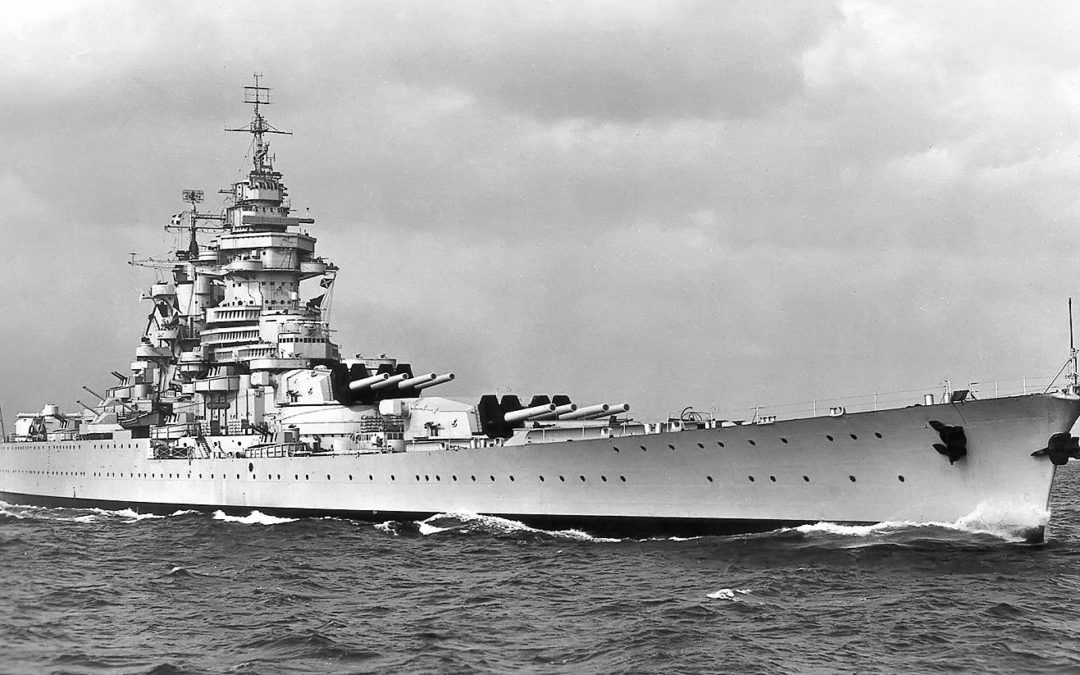
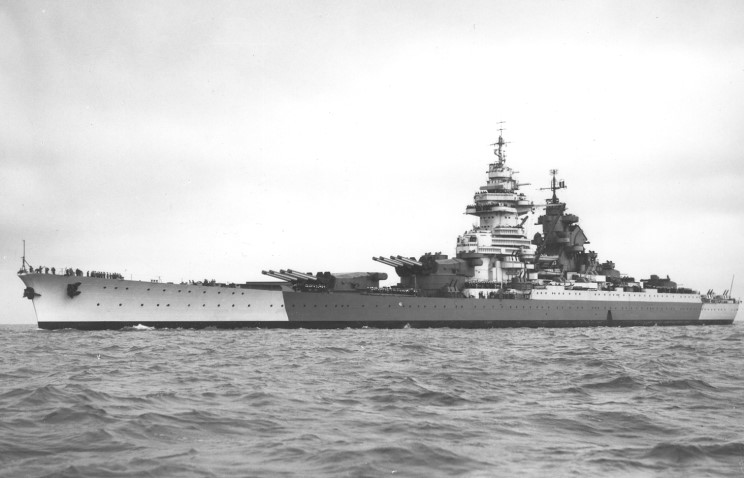
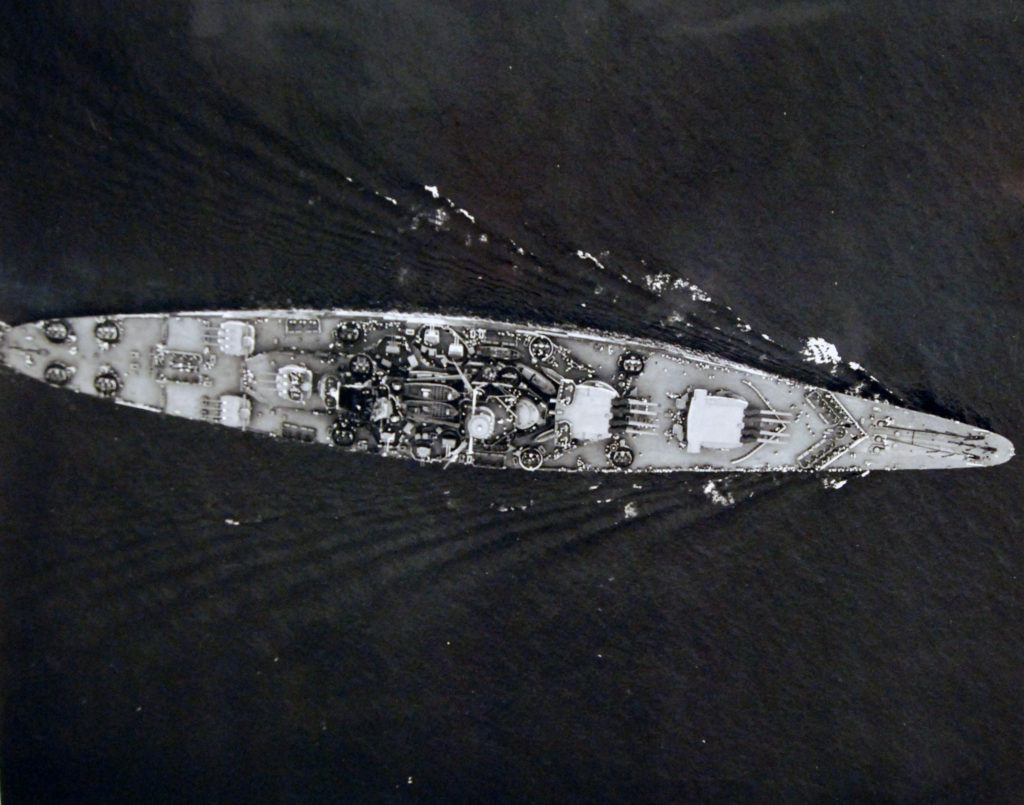
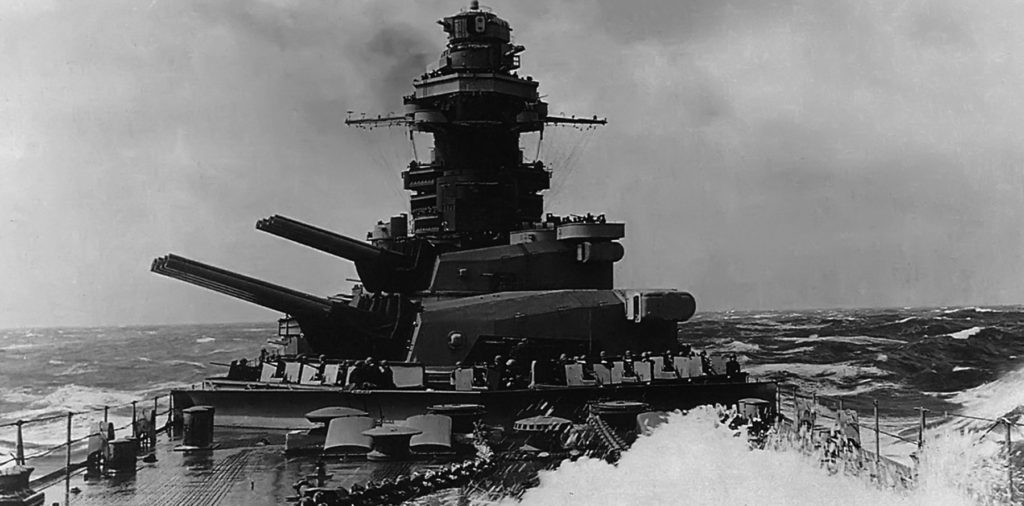
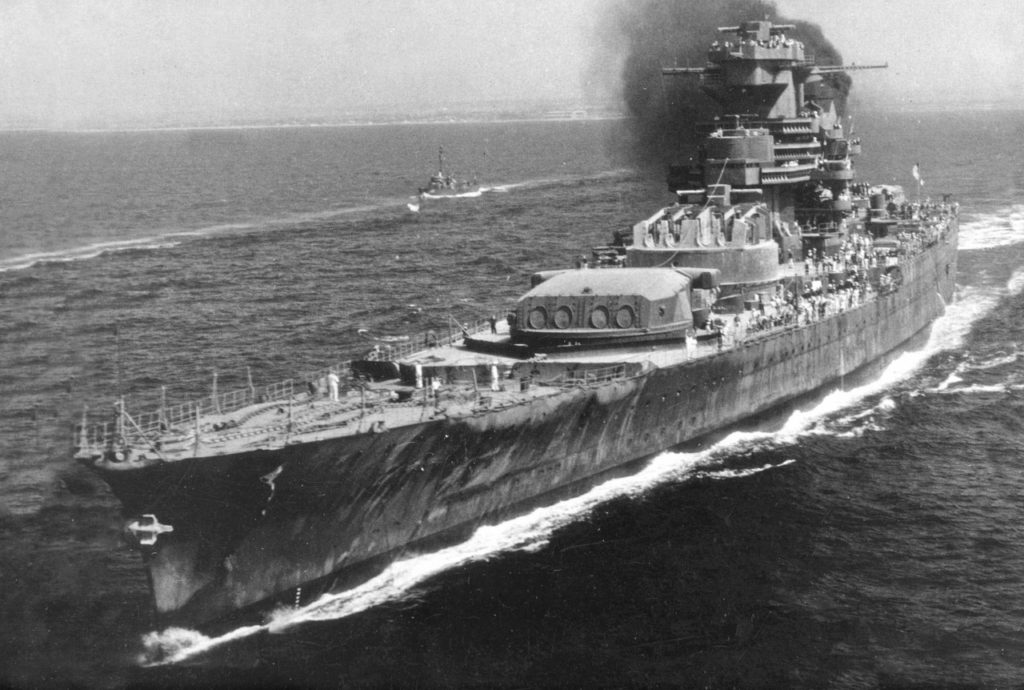
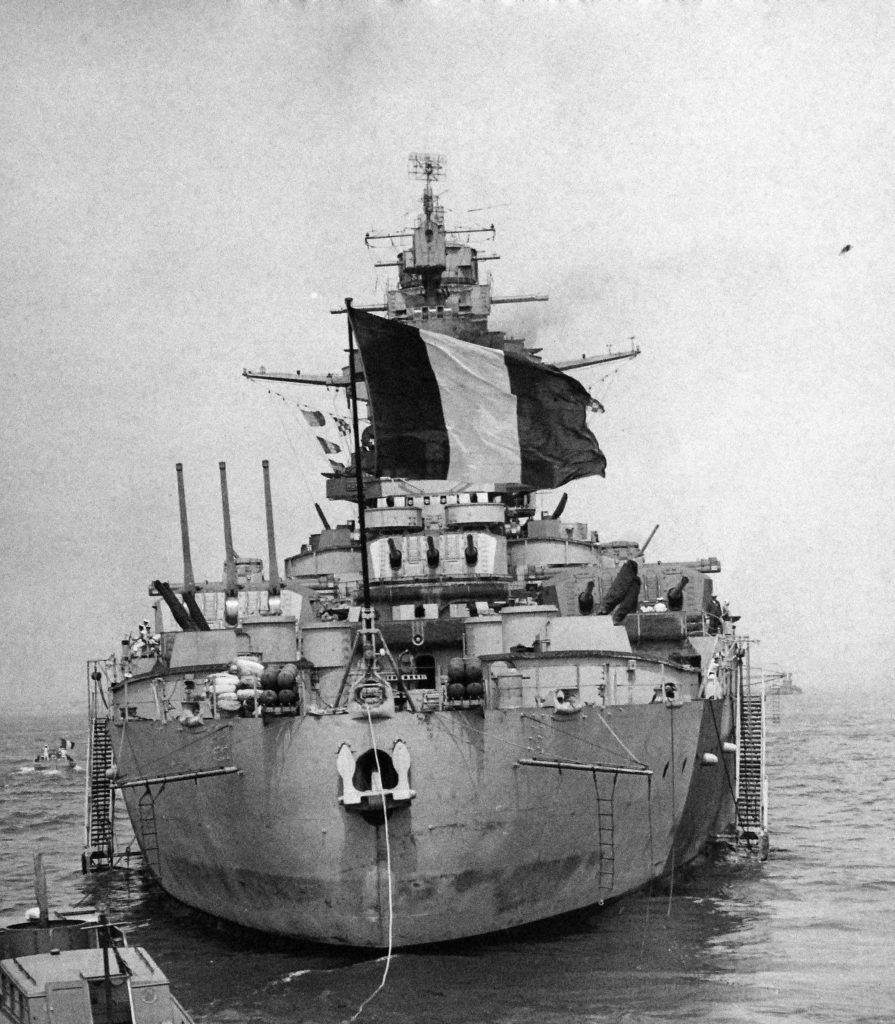
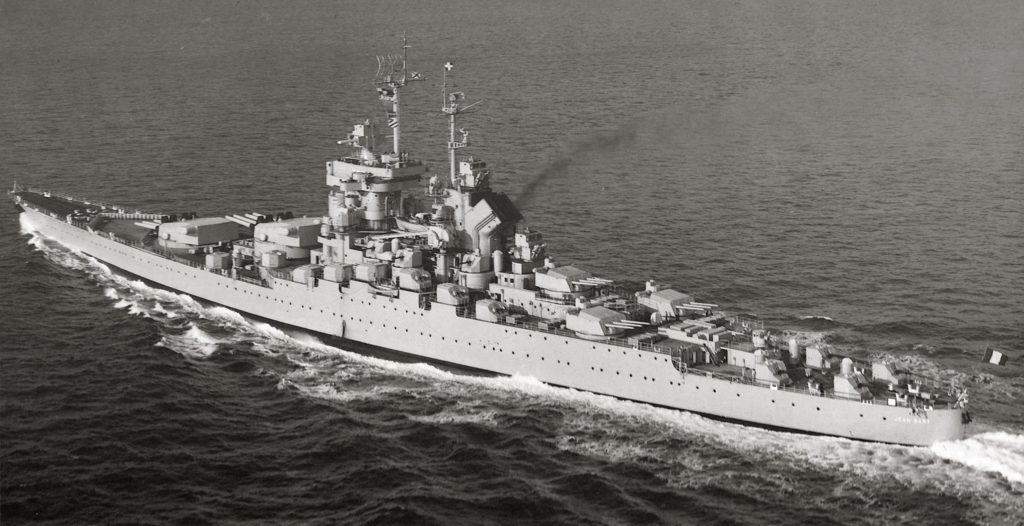

Trackbacks/Pingbacks